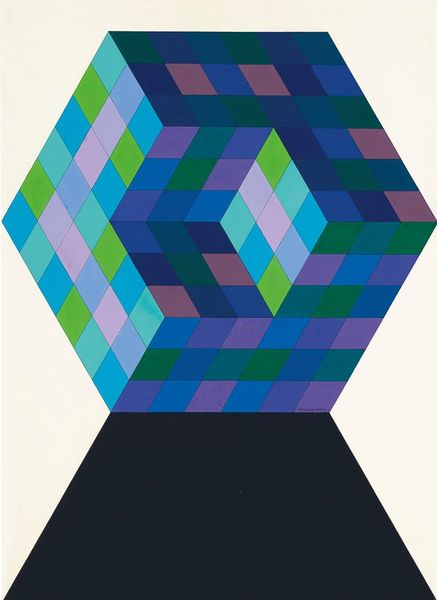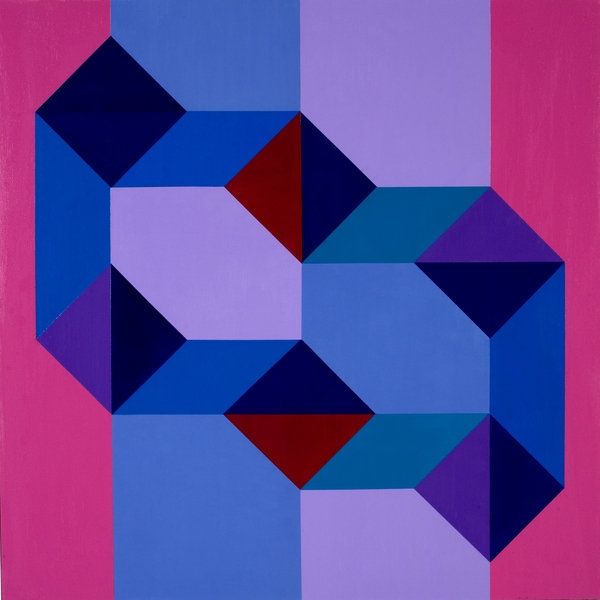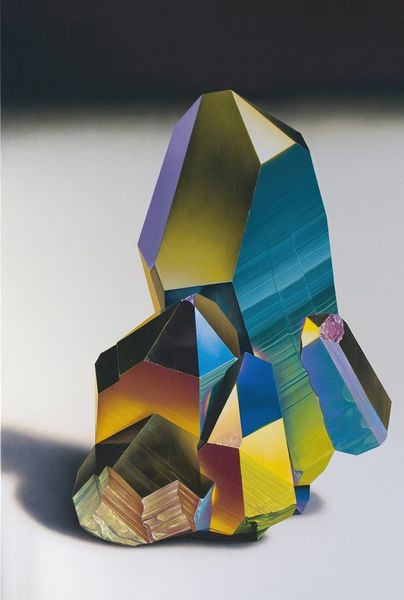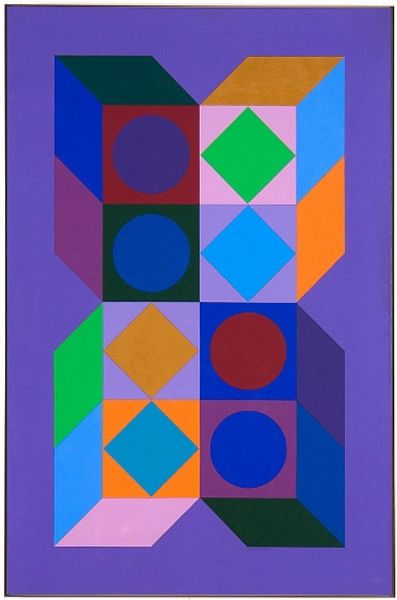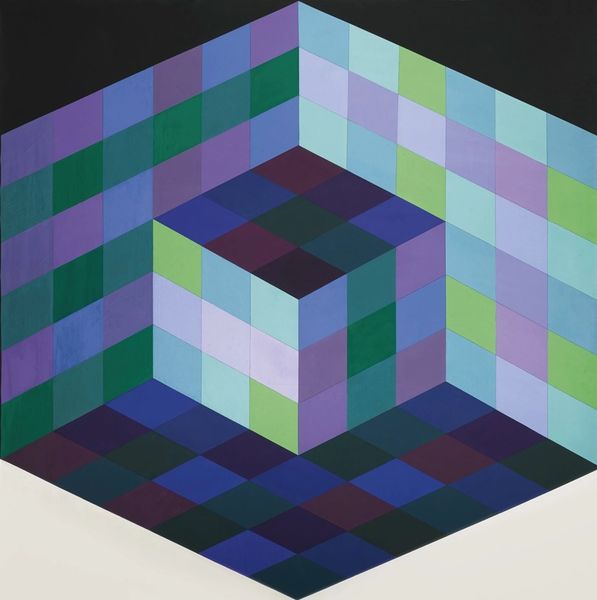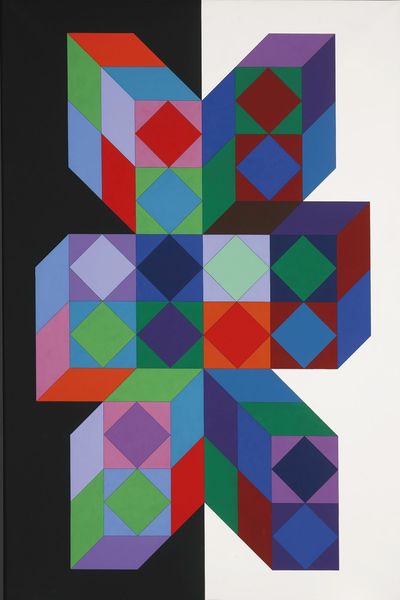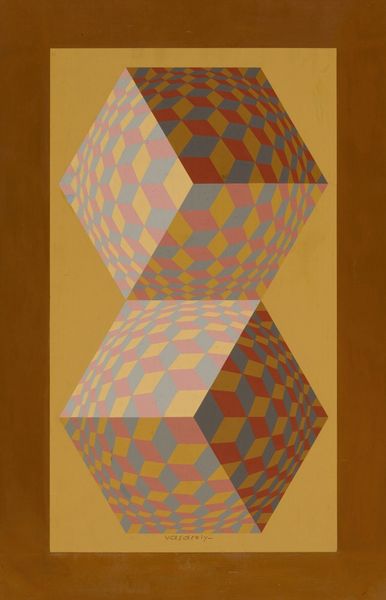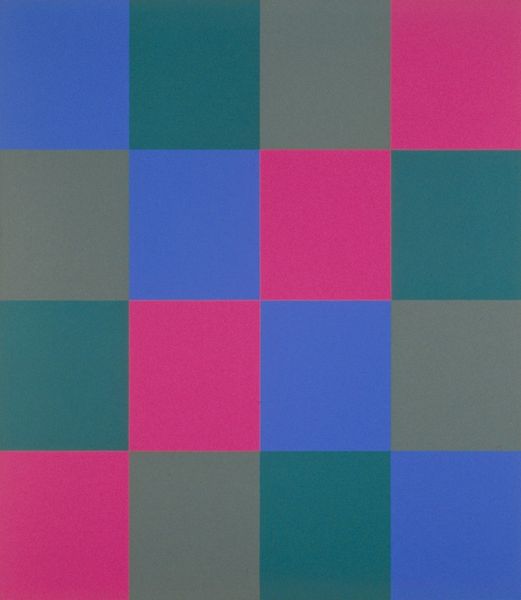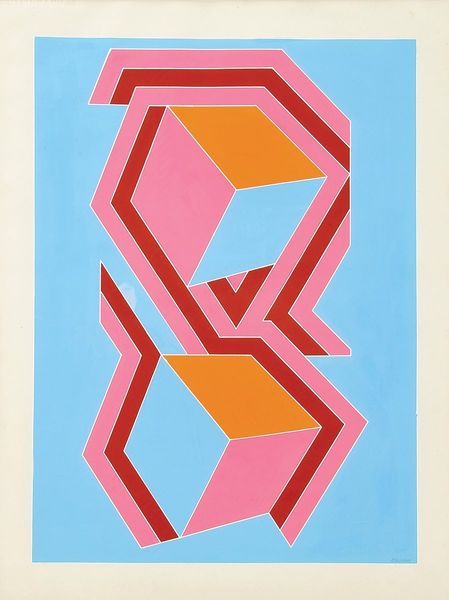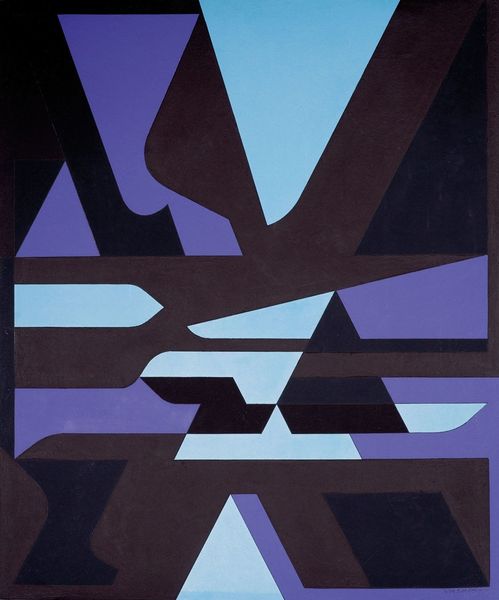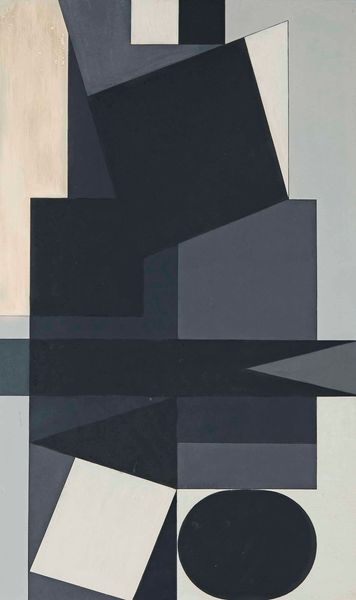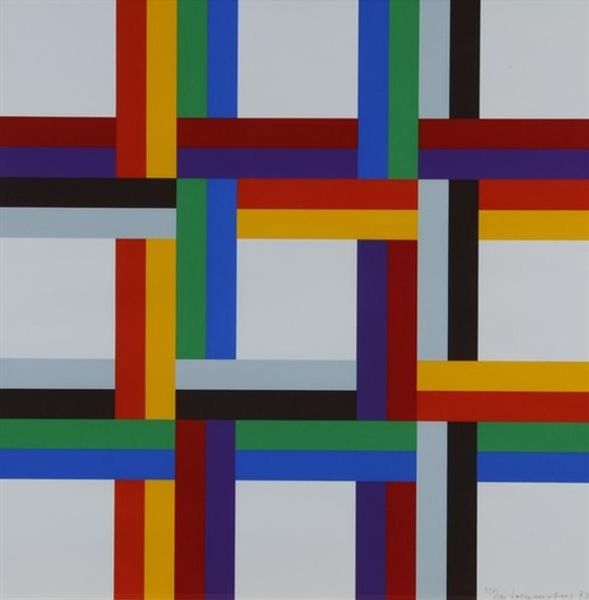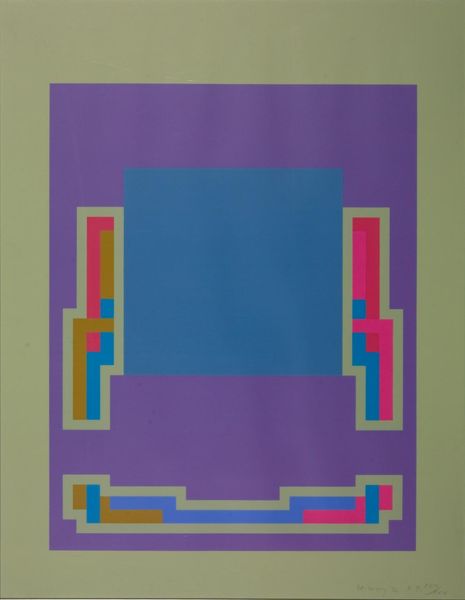
acrylic-paint
#
op-art
#
acrylic-paint
#
abstract
#
geometric
#
abstraction
#
geometric form
#
hard-edge-painting
Copyright: Modern Artists: Artvee
Curator: Standing before us is Victor Vasarely's "Meta #4," an acrylic painting from 1976. It’s an intriguing piece from the Op Art movement. Editor: Whoa, dizzying! It almost vibrates. I'm immediately struck by how static it is, despite the illusion of movement. It's like solid geometry meets psychedelic. Curator: That's Op Art for you—playing with the viewer’s perception. Vasarely aimed to democratize art, creating pieces accessible to all through pure visual sensation. It challenged traditional notions of the artist’s hand, in favor of mass-produced, easily understood forms. Editor: Accessible, maybe, but meticulously crafted, no? Look at the gradation of color within each diamond, those precisely rendered facets. And the choice of acrylic, allowing for such sharp, clean lines— it emphasizes industrial process but there is craftmanship here, each cube is a matrix of countless tiny shapes. Curator: Absolutely, the industrial element is critical. Post-war, Op Art aligned with ideals of technological progress and a more egalitarian society. It resonated with a public fascinated by science and the future. The "Meta" series specifically explored the construction of form from basic elements. Editor: But does it successfully break away from its materials? Isn't this careful control almost…oppressive? There’s something a bit unsettling about the relentless precision and those rigid shapes. And it relies heavily on the eye to create meaning. Curator: Perhaps unsettling *is* the point. Many critics saw Op Art as cold and detached. Its rise coincided with social anxieties about mechanization and conformity. Vasarely may have intended to provoke discussion about how we perceive reality in a rapidly changing world. It fits well in a post-modern era of suspicion. Editor: I can agree to that; either way, "Meta #4" gives pause. Whether it inspires you or causes discomfort, its impact is undeniable. Curator: Indeed, and viewing it within its historical and social context offers valuable insights into both the artwork and the era it reflects.
Comments
No comments
Be the first to comment and join the conversation on the ultimate creative platform.
